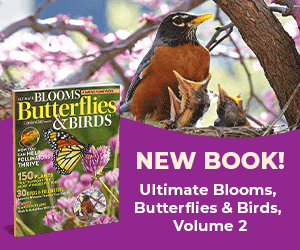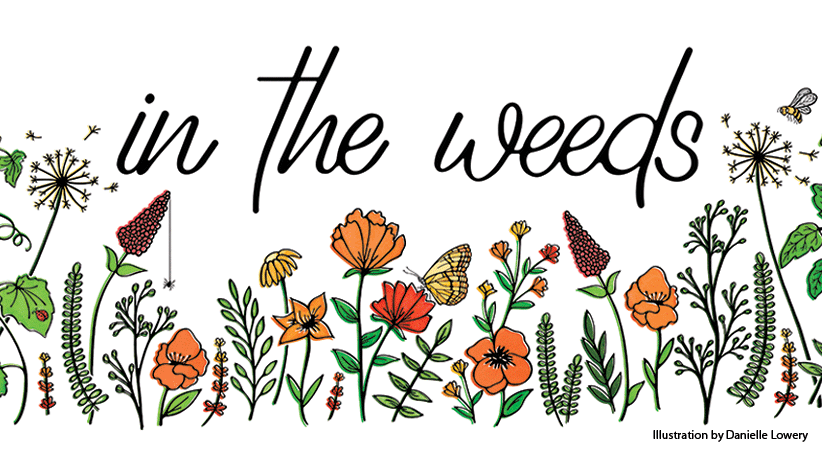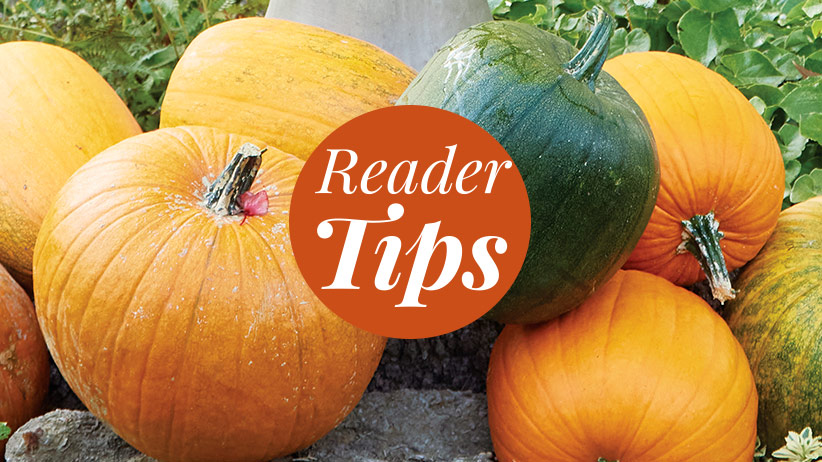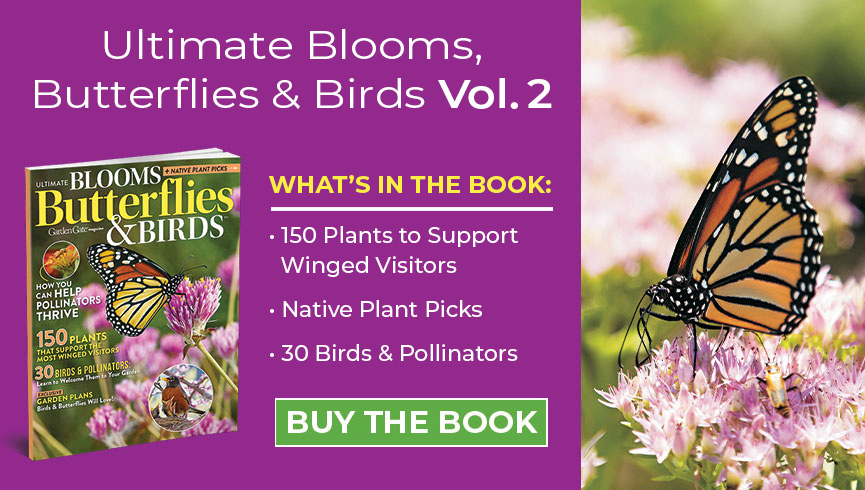
Meet our 2020 Reader Garden award winner: Anne Barone!
Good things do come to those who wait. Just ask Garden Gate's inaugural Reader Garden Award Winner Anne Barone. Her relationship with this property in Baltimore, Maryland, started two decades ago, when she spotted a for-sale sign in front of a bungalow with a green tile roof that she had always admired. The physician and single mother of one was determined to make that house — and the neglected garden that went with it — her own.

Anne's journey to create a "joyful urban garden"
At first, her efforts at creating a garden were a bit haphazard. She removed some dying Eastern white pine trees (Pinus strobus), planted a row of leatherleaf viburnum (Viburnum rhytidophyllum) along the back fence, and installed a patio as well as a short retaining wall to manage the slope. But this daughter of Greek immigrants, who was tasked as a child with digging and wrapping the family’s fig tree (Ficus spp.) every year, found the heavy clay soil of her new home daunting. “I was not an enthusiastic gardener in those days,” she says.
About 10 years ago, she finally rolled up her sleeves and started attending classes and lectures, visiting gardens and “taking gardening seriously.” Slowly the pleasant outdoor space you see here began to emerge. She began amending the soil with composted manure and carving out her “joyful urban garden” that now includes a koi pond, a pollinator garden, a deck with vegetables growing in containers, generous pathways, outdoor seating and sweeping views — all on a 75-by-125-foot lot.
Meet Our Previous Award Winners:
2024 Reader Garden Award Winners
2023 Reader Garden Award Winners
2022 Reader Garden Award Winners
2021 Reader Garden Award Winners
Enter Your Garden in the Reader Garden Award!

Create a welcoming entrance
The welcoming front door is flanked by green-glazed urns that match the roof’s green tiles and are planted with dwarf Alberta spruce (Picea glauca ‘Conica’) to reinforce the Mediterranean theme. Anne replaced the sloped front lawn with Allegheny spurge (Pachysandra procumbens) and lined the front steps with rows of Knock Out roses (Rosa hybrid) on both sides. But most of the garden is in the side and back yards. Let's take a look.

Low-maintenance deck
The large wooden deck wraps around the side and back of the house and required staining every spring. To save herself some work, Anne replaced it with low-maintenance composite decking over the course of five years — “One of the best things I did for my sanity,” she says.

Add a pond to the deck
The deck was large enough, Anne figured, that she could recruit part of it into service as a pond. “I always wanted a pond and I had a huge deck, so why not carve a pond out of this? So, I had a local pond guy cut one 2 feet deep out of a corner of the deck.”
Today, the 7-by-12½-foot deck-top water feature above is home to blooming lotus, water lilies and a school of koi fish that follow Anne around when they're hungry. “The koi hibernate in the winter,” she says, “so it’s always a thrill when, one day in March, they emerge from their hibernation and begin swimming around and want to eat.”

Once the koi pond was installed, Anne added a wall with green glazed tiles that coordinate with the back door and roof. This was the perfect place to place a decorative fountain and the ledge is now home to a pair of windowboxes filled with colorful plants.
Related Articles:
Plants that are Toxic to Fish
How to Get Rid of Algae in Your Pond

Grow veggies in raised planters
Even with the cut-out pond, the deck’s prime real estate easily accommodates containers like the 8-foot-wide raised planter above. It's a great place for growing herbs and vegetables. The trellis on the back is anchored to the deck so it easily supports big tomato plants and vining crops, such as cucumbers. “I love to grow food,” Anne says, “and I’m always excited to have a great crop of tomatoes, eggplants and cucumbers that I can share with family and friends.”

Show off a garden ornament
Watching over the pollinator garden is a special statue Anne discovered in a local antique shop seen in the photo above. “I call her my Garden Goddess,” Anne explains. “She was moved several times before she found a home here as a focal point.” Anne switched out the plants in the bed surrounding the statue many times before finally settling on a low-maintenance combination she likes of sedums (Hylotelephium spp. and hybrids) and daylilies (Hemerocallis hybrids). “You can almost imagine her splashing in water in that bed,” says Anne, who admits she likes the challenge of creating beauty with a seasonally changing palette of colors and textures. “Nothing is ever the same,” she says. “It is not the same garden from year to year or season to season. I am always improving it.”
Add pollinator plants to an urban garden
This is the sunniest part of the backyard and has evolved into a pollinator border dedicated to plants that attract bees, butterflies and hummingbirds. It all started with a few giant hyssop (Agastache hybrid) plants. It was always buzzing with bee activity and that inspired Anne to add more plants they'd love. Now bee balm (Monarda didyma), butterfly weed (Asclepias tuberosa), liatris (Liatris spicata), purple coneflower (Echinacea purpurea), salvia (Salvia x sylvestris) and black-eyed Susan (Rudbeckia spp. and hybrids), fill the yard with color and visiting pollinators. When Anne started seeing hummingbirds darting around a small honeysuckle vine (Lonicera periclymenum) on an arbor so she added another one. "In these days of dwindling bee and butterfly populations, it's gratifying to encourage these species” she says.
You Might Also Like:
How to Design a Garden to Attract Pollinators
Shop the Pollinator Collection
Coneflower Growing Guide
Native Bees Overwinter in Unexpected Places

Anne's favorite pollinator plants
Anne knows it’s important to support native pollinators like bees and butterflies. She eschews the use of commercial herbicides and pesticides in her garden, instead relying on an organic spray of 30% vinegar to water for weed control. Here are some of her favorite flowers in her pollinator garden.
Coreopsis (Coreopsis ‘Jethro Tull’)
Perennial; compact coreopsis with brilliant golden, fluted petals in summer; full sun; 12 to 18 in. tall and wide; cold hardy in USDA zones 5 to 9
Crocosmia (Crocosmia ‘Lucifer’)
Bulb; flame-red flowers in midsummer through fall; full sun to part shade; 36 to 42 in. tall, 12 to 18 in. wide; cold hardy in USDA zones 5 to 9
Bee balm (Monarda ‘Raspberry Wine’)
Perennial; berry-red tubular flowers in mid- to late summer; full sun to part shade; 3 to 4 ft. tall, 2 to 3 ft. wide; cold hardy in USDA zones 3 to 8
Coneflower (Echinacea purpurea ‘White Swan’)
Perennial; clean white petals in summer rebloom without deadheading; full sun to part shade; 24 to 36 in. tall, 18 to 24 in. wide; cold hardy in USDA zones 3 to 9
Red hot poker (Kniphofia ‘Mango Popsicle’)
Perennial; impressive bright orange blossoms summer to fall; full sun; 18 to 30 in. tall, 12 to 18 in. wide; cold hardy in USDA zones 6 to 8

Shade garden design
Not everything in the backyard was scrapped when Anne embarked on her garden journey. When she initially cleared away the pines in back she left three significant trees. A pair of crape myrtles (Lagerstroemia indica) and a large Japanese maple (Acer palmatum) provide shady retreats on both sides of the backyard. She lined these areas with a variety of hydrangeas (Hydrangea spp. and hybrids) — a plant with happy summer childhood memories — and filled in with hostas (Hosta spp. and hybrids), ferns and other shade-loving stalwarts. “I love gardening in the shade,” insists Anne. “Who doesn’t like beautiful hostas, ligularia (Ligularia dentata) and hakonechloa (Hakonechloa macra)?”
When it comes to combining her shade plants, Anne is not afraid to move them around. For continuity, she suggests using a limited palette of plants and then arranging these same plants differently in separate areas. “Some plants are just better performers than others,” she says. “Look for combinations that you like in other gardens or in magazines or books and repeat them in your own garden. If they don’t work, try something else or move them elsewhere. With time and practice you learn what plants will succeed in your space.”
You Might Also Like:
Powerhouse Shade Garden Plants
How to Grow Coral Bells
Stroll Through a Southern Shade Garden

Anne’s favorite hydrangeas
Anne loves hydrangeas for many reasons, not the least of which is the fact that they bring back childhood memories of summers spent on the eastern shore of Chesapeake Bay at a sprawling hotel overgrown with white hydrangeas. But she also appreciates their sheer beauty, long-lasting bloom time and the diversity of flower shapes. “The blossoms are varied,” she says, “with mopheads, lacecaps, panicles and oakleafs. They come in all sizes, and many of them tolerate both shade and full sun. Plus, they make an impact! What’s there not to like?” Here are some of Anne’s favorite hydrangeas.
Smooth hydrangea (Hydrangea arborescens Incrediball®)
Strong stems and big white snowball blossoms in summer; full sun to part
shade; 4 to 5 ft. tall and wide; cold hardy in USDA zones 3 to 9
Bigleaf hydrangea (Hydrangea macrophylla Endless Summer® ‘Twist-n-Shout®)
The first reblooming lacecap with pink or blue blooms from late spring to fall; part shade; 3 to 5 ft. tall and wide; cold hardy in USDA zones 4 to 9
Bigleaf hydrangea (Hydrangea macrophylla Next Generation® ‘Red Sensation’)
Compact mophead with lime-green snowballs in spring through fall that age to bright red; part shade; 2 to 3 ft. tall, 3 to 5 ft. wide; cold hardy in USDA zones 5 to 9
Panicle hydrangea (Hydrangea paniculata Fire Light®)
Transforms in summer from pure white to rich pomegranate; full sun to part shade; 6 to 8 ft. tall and wide; cold hardy in USDA zones 3 to 8
You Might also Like:
How to Change Hydrangea Bloom Color from Pink to Blue
Find the Right Bigleaf Hydrangea For Your Garden
7 of Our Favorite Panicle Hydrangeas
Four-Season Hydrangea Border















